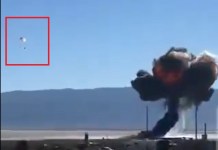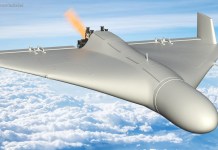Further increasing the combat capabilities of the F-15E Strike Eagle and F-35 Lightning II fighters, a new all-weather weapon – StormBreaker will be integrated, enhancing the lethality of these American beasts.
“StormBreaker is the only weapon that enables pilots to hit moving targets during bad weather or if dust and smoke are in the area,” StormBreaker programme director Cristy Stagg told Naval Technology.
Recently, Raytheon also announced the integration of the Smart weapon with F/A-18E/F Super Hornet for the US Navy. Reportedly, during the US Navy test flight, the StormBreaker safely separated from the jet, receiving guidance data from the aircraft to hit the desired target.
“Super Hornet pilots will be able to use poor visibility to their advantage when StormBreaker integration is complete,” said Stagg.
The Stormbreaker is touted as a tri-mode seeker that can provide maximum operational flexibility: millimeter-wave radar to detect and track targets through weather, imaging infrared for enhanced target discrimination and a semi-active laser that enables the weapon to track an airborne laser designator or one on the ground.

It is capable of flying more than 45 miles to strike fixed or moving targets at any time of day and in all weather conditions. It shares the information in all three modes peering through battlefield dust and debris, giving the warfighter a capability that’s unaffected by conditions on the ground or in the air.
Its small size helps in using fewer aircraft to take out the same number of targets as previous, larger weapons that required multiple jets. It enables fewer attacks while striking more targets in lesser time.
To maintain stealth of the F-35 fighter, the weapon is placed in the internal bay of the aircraft. According to a June 2020 Congressional Research Service report called “Precision Guided Munitions,” the added laser guidance enables the Stormbreaker to strike both fixed and moving targets.
Stormbreaker uses Link 16 and ultra-high frequency datalinks, along with infrared guidance, to provide course corrections.
According to Kris Osborn of The National Interest, the Stormbreaker was engineered with the strategic recognition of the future targets in major war will be much more difficult to reach given enemy countermeasures, sensor detection ranges and an increase in stand-off weaponry.
“With this in mind, Air Force and Raytheon developers sought to engineer a multi-mode targeting linkable to draw upon a two-way data link to track and destroy enemy targets from distances as far at forty miles,” he explained.
However, there’s another obstacle that the F-35 faces which may render the weapon useless in the battlefield. As reported earlier, when the F-35s of the Royal Netherlands Air Force were tasked to escort one of the B-52 bombers, but the mission was abandoned as F-35s could not ‘strangely’ operate in bad weather.
“Damaged pipes have been found on F-35A fighters. These are pipes from the On-Board Inert Gas Generation System (OBIGGS) in a fuel tank. All countries with F-35As were advised to avoid flights near storm cells and to protect the aircraft on the ground by a shelter or lightning rod,” the Dutch Ministry of Defence said in a statement.
While the StormBreaker is an all-weather precision-guided weapon, if America’s most advanced fighter, F-35, is riddled with such problems then will the weapon be of any use during bad weather conditions in the battlefield?




